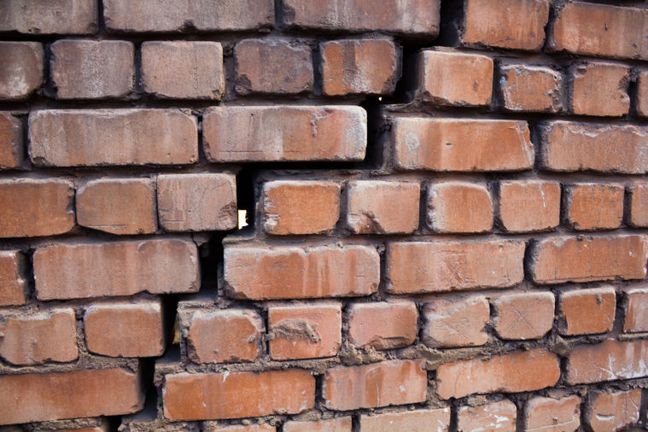One of the first tasks a homeowner’s or association’s attorney does when they receive a new construction defect case is to immediately obtain records relating to the completion date of the property at issue to make certain the 10-year statute of repose has not yet run. Similarly, of course, one of the first steps defense attorneys need to take when their builder client is faced with a construction defect claim is to immediately ascertain whether they can defend the action based on the statute of repose. If the property at issue appears to have been completed close to ten years before the action commences, this analysis is even more critical for both sides. The analysis today has changed considerably based on the wording of the applicable statutes – and is arguably less straightforward now than it used to be.
The Statute of Repose, Pre-McMillin
Prior to the Supreme Court of California’s ruling in the case of McMillin Albany LLC et al v. The Superior Court of Kern County last year, which held the Right to Repair Act was the exclusive remedy for property damages claims arising out of construction defects, there was no mandatory statutory pre-litigation process. Plaintiff’s attorneys filed complaints, typically including causes of action sounding in strict liability, negligence, breach of contract and/or breach of warranty, without being required to first engage in pre-litigation efforts, unless they were mandated by contract. At that time, attorneys looked to Code of Civil Procedure section 337.15, notably subdivision (g), to evaluate the ten year statute of repose. This statute reads in part as follows:
“(g) The 10-year period specified in subdivision (a) [the statute of repose time frame] shall commence upon substantial completion of the improvement, but not later than the date of one of the following, whichever first occurs:
(1) The date of final inspection by the applicable public agency.
(2) The date of recordation of a valid notice of completion.
(3) The date of use or occupation of the improvement.
(4) One year after termination or cessation of work on the improvement.”
Defense counsel’s task was to ascertain whether any of the above occurred more than ten years prior to the filing of the lawsuit, and if so, to file a motion to dispose of the case based on the statute of repose. Importantly, this code section provides guidance as to what events can be used to establish the date of “substantial completion.” The date of final inspection by the applicable public agency, the date the notice of completion is recorded, the date of use or occupation of the improvement, and one year after termination or cessation of work on the improvement are all events used to establish the substantial completion date. Typically, the recording of the notice of completion is the last event to occur, even though the earlier events all “trigger” the running of the statute of repose. Thus the ten year period commences at substantial completion, “but not later than” the earliest of these events.
The Statute of Repose, Today
The Right to Repair Act has its own ten year statute of repose. A claimant proceeding under the Right to Repair Act must provide proper notice of the pre-litigation claim to the builder within the ten year period. This notice temporarily tolls the statute of repose until the pre-litigation process is complete. Civil Code section 941 subdivision (a) embodies this statute of repose, and reads as follows:
“(a) Except as specifically set forth in this title, no action may be brought to recover under this title more than 10 years after substantial completion of the improvement but not later than the date of recordation of a valid notice of completion.”
What is the Difference?
While Civil Code section 941 subdivision (a) contains the “but not later than” phrase also used in Code of Civil Procedure section 337.15(g) – suggesting there are events before the date of recordation of a valid notice of completion that commence the running of the 10-year period – it does not specify what these events are. Are they the same as the other three events enumerated in Code of Civil Procedure section 337.15?
The answer is unclear. Civil Code section 941 expressly states, at subdivision (d), “Section[] 337.15…of the Code of Civil Procedure [does] not apply to actions under this title.” The problem is “substantial completion” is not defined in the code, except in Code of Civil Procedure section 337.15, which by its own terms “does not apply” to the Right to Repair Act. While the language used in section 941 subdivision (a) suggests the existence of other events earlier than the recordation of a valid notice of completion which commence the running of the ten year period, it is unclear whether one can look to Code of Civil Procedure section 337.15 for guidance as to what courts should recognize as a triggering event.
Conclusion
California courts have yet to directly address the issue of what, if any, other events can be used to establish “substantial completion” in the context of an action under the Right to Repair Act potentially barred by the ten year statute of repose. Reliance on the date of recordation of a valid notice of completion alone is not enough given this uncertainty. Vigorous defense of a builder client demands complete investigation of all events surrounding of the completion of the property at issue, as well as development of creative “substantial completion” arguments to summarily dispose of a given claim, even one which may, at first blush, appear to be timely.

 Author: Brian Woolfall
Author: Brian Woolfall
 Cannabis Workers Allege Quota to Trim 4 Pounds a Day Violates the California Labor Code
Cannabis Workers Allege Quota to Trim 4 Pounds a Day Violates the California Labor Code
 The Ninth Circuit Reminds Us: Every Word Matters
The Ninth Circuit Reminds Us: Every Word Matters
 NO WAY, PRO SE! The Consequences of Abusing the Judicial System as a Pro Se Litigant in Colorado
NO WAY, PRO SE! The Consequences of Abusing the Judicial System as a Pro Se Litigant in Colorado
 Victim of Financial Mismanagement or Unlawful Retaliation? New Jersey City University Program Founder Claims School Retaliated After Reporting Alleged Sexual Harassment
Victim of Financial Mismanagement or Unlawful Retaliation? New Jersey City University Program Founder Claims School Retaliated After Reporting Alleged Sexual Harassment
 “Real Housewives” Gets a Reality Check
“Real Housewives” Gets a Reality Check
 Missing a Chapter: Insufficiency of Expert Deposition Testimony in Medical Malpractice Litigation
Missing a Chapter: Insufficiency of Expert Deposition Testimony in Medical Malpractice Litigation
 Crash Course: Why Summary Judgment Misses the Mark in Illinois Multi-Cause Limousine Crash Collision
Crash Course: Why Summary Judgment Misses the Mark in Illinois Multi-Cause Limousine Crash Collision
 Bitter Truths: Lead, Cadmium, and Defective Pleadings in California Chocolate Class Action
Bitter Truths: Lead, Cadmium, and Defective Pleadings in California Chocolate Class Action
 The Law of Unintended Consequences: Including Insurance Brokers in Litigation Strategy Communication May Waive the Attorney-Client Privilege
The Law of Unintended Consequences: Including Insurance Brokers in Litigation Strategy Communication May Waive the Attorney-Client Privilege
 A Major Blow to the Practice of “Chalking” Tires to Support Issuance of Parking Tickets
A Major Blow to the Practice of “Chalking” Tires to Support Issuance of Parking Tickets
 California Employees Cannot Recover Back Pay Under the California Private Attorneys General Act
California Employees Cannot Recover Back Pay Under the California Private Attorneys General Act